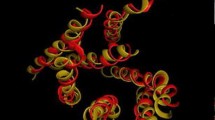Abstract
In the past 20 years there have been great leaps in the understanding of the structure and mechanism of monoamine transporters (MATs) owing to X-ray crystallography and cryo-EM. From the first breakthrough with the crystallization of the ortholog bacterial leucine transporter (LeuT) to more recent structures of the higher-identity drosophila dopamine transporter (dDAT) and human serotonin transporter (hSERT), the construction of better 3D computational models of hDAT has been pursued and is essential for the development of new medications for neuropsychiatric disorders associated with dopamine dysregulation. Previous and recent homology models of the yet to be crystallized hDAT have relied only on one template for generation. Here, we tabulated currently available crystal structures of MATs and then employed a multi template approach to generate a hDAT 3D homology model where contribution of individual templates account for missing structural features of single template models (i.e., EL2 in dDAT).

Graphical abstract





Similar content being viewed by others
References
Aggarwal S, Mortensen OV. Overview of monoamine transporters. Curr Protoc Pharmacol. 2017;79:12.16.1–7. https://doi.org/10.1002/cpph.32.
Yamashita A, Singh SK, Kawate T, Jin Y, Gouaux E. Crystal structure of LEUTAA, a bacterial homolog of Na+/Cl–dependent neurotransmitter transporters. Nature. 2005;437:215–23. https://doi.org/10.1038/nature03978.
Gouaux E, Penmatsa A, Wang K. X-ray structure of dopamine transporter elucidates antidepressant mechanism. Nature. 2013;503:85–90. https://doi.org/10.2210/pdb4m48/pdb.
Wang KH, Penmatsa A, Gouaux E. Neurotransmitter and psychostimulant recognition by the dopamine transporter. Nature. 2015;521:322–7. https://doi.org/10.1038/nature14431.
Penmatsa A, Wang KH, Gouaux E. X-ray structures of Drosophila dopamine transporter in complex with nisoxetine and reboxetine. Nat Struct Mol Biol. 2015;22:506–8. https://doi.org/10.1038/nsmb.3029.
Coleman JA, Green EM, Gouaux E. X-ray structures and mechanism of the human serotonin transporter. Nature. 2016;532:334–9. https://doi.org/10.1038/nature17629.
Coleman JA, Yang D, Zhao Z, Wen P-C, Yoshioka C, Tajkhorshid E, et al. Serotonin transporter–ibogaine complexes illuminate mechanisms of inhibition and transport. Nature. 2019;569:141–5. https://doi.org/10.1038/s41586-019-1135-1.
Coleman JA, Navratna V, Antermite D, Yang D, Bull JA, Gouaux E. Chemical and structural investigation of the paroxetine-human serotonin transporter complex. Elife. 2020;9:e56427. https://doi.org/10.1101/2020.02.26.966895.
Coleman JA, Gouaux E. Structural basis for recognition of diverse antidepressants by the human serotonin transporter. Nat Struc Mol Biol. 2018;25:170–5. https://doi.org/10.1038/s41594-018-0026-8.
Huang X, Zhan C-G. How dopamine transporter interacts with dopamine: Insights from molecular modeling and simulation. Biophys J. 2007;93:3627–39. https://doi.org/10.1529/biophysj.107.110924.
Yuan Y, Huang X, Midde NM, Quizon PM, Sun W-L, Zhu J, et al. Molecular mechanism of HIV-1 Tat interacting with human dopamine transporter. ACS Chem Neurosci. 2015;6:658–65. https://doi.org/10.1021/acschemneuro.5b00001.
Haddad Y, Heger Z, Adam V. Guidelines for homology modeling of dopamine, norepinephrine, and serotonin transporters. ACS Chem Neurosci. 2016;7:1607–13. https://doi.org/10.1021/acschemneuro.6b00242.
Ortore G, Orlandini E, Betti L, Giannaccini G, Mazzoni MR, Camodeca C, Nencetti S. Focus on human monoamine transporter selectivity. New human DAT and NET models, experimental validation, and SERT affinity exploration. ACS Chem Neurosci. 2020;11:3214–32. https://doi.org/10.1021/acschemneuro.0c00304.
Altschul SF, Gish W, Miller W, Myers EW, Lipman DJ. Basic local alignment search tool. J Mol Biol. 1990;215:403–10. https://doi.org/10.1016/s0022-2836(05)80360-2.
Šali A, Blundell TL. Comparative protein modelling by satisfaction of spatial restraints. J Mol Biol. 1993;234:779–815. https://doi.org/10.1006/jmbi.1993.1626.
Melo F, Sali A. Fold assessment for comparative protein structure modeling. Protein Sci. 2007;16:2412–26. https://doi.org/10.1110/ps.072895107.
Jo S, Kim T, Iyer VG, Im W. CHARMM-GUI: a web-based graphical user interface for CHARMM. J Comput Chem. 2008;29:1859–65. https://doi.org/10.1002/jcc.20945.
Jones G, Willett P, Glen RC, Leach AR, Taylor R. Development and validation of a genetic algorithm for flexible docking. J Mol Biol. 1997;267:727–48. https://doi.org/10.1006/jmbi.1996.0897.
Reva BA, Finkelstein AV, Skolnick J. What is the probability of a chance prediction of a protein structure with an RMSD of 6 Å? Fold Des. 1998;3:141–7. https://doi.org/10.1016/s1359-0278(98)00019-4.
Kitayama S, Shimada S, Xu H, Markham L, Donovan DM, Uhl GR. Dopamine transporter site-directed mutations differentially alter substrate transport and cocaine binding. Proc Natl Acad Sci USA. 1992;89:7782–5. https://doi.org/10.1073/pnas.89.16.7782.
Author information
Authors and Affiliations
Corresponding author
Ethics declarations
Conflict of interest
The authors declare no competing interests.
Additional information
Publisher’s note Springer Nature remains neutral with regard to jurisdictional claims in published maps and institutional affiliations.
Supplementary Information
Rights and permissions
About this article
Cite this article
Jones, C.B., Dukat, M. Review of 3D templates for in silico homology models of MATs: improved 3D model of hDAT. Med Chem Res 31, 643–651 (2022). https://doi.org/10.1007/s00044-022-02863-5
Received:
Accepted:
Published:
Issue Date:
DOI: https://doi.org/10.1007/s00044-022-02863-5




